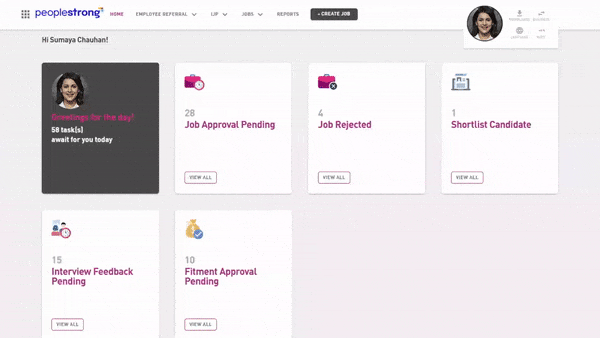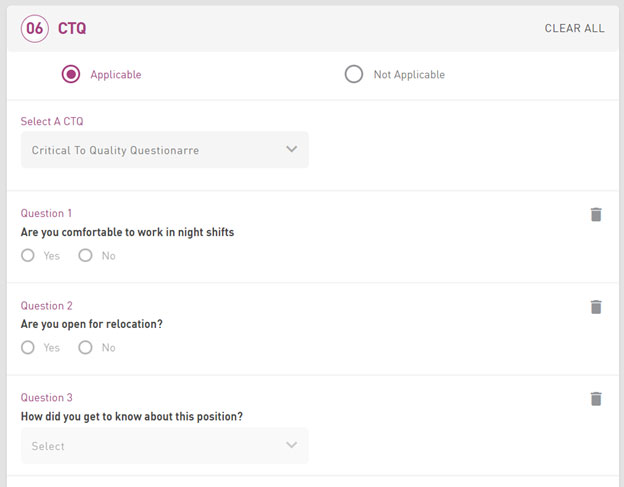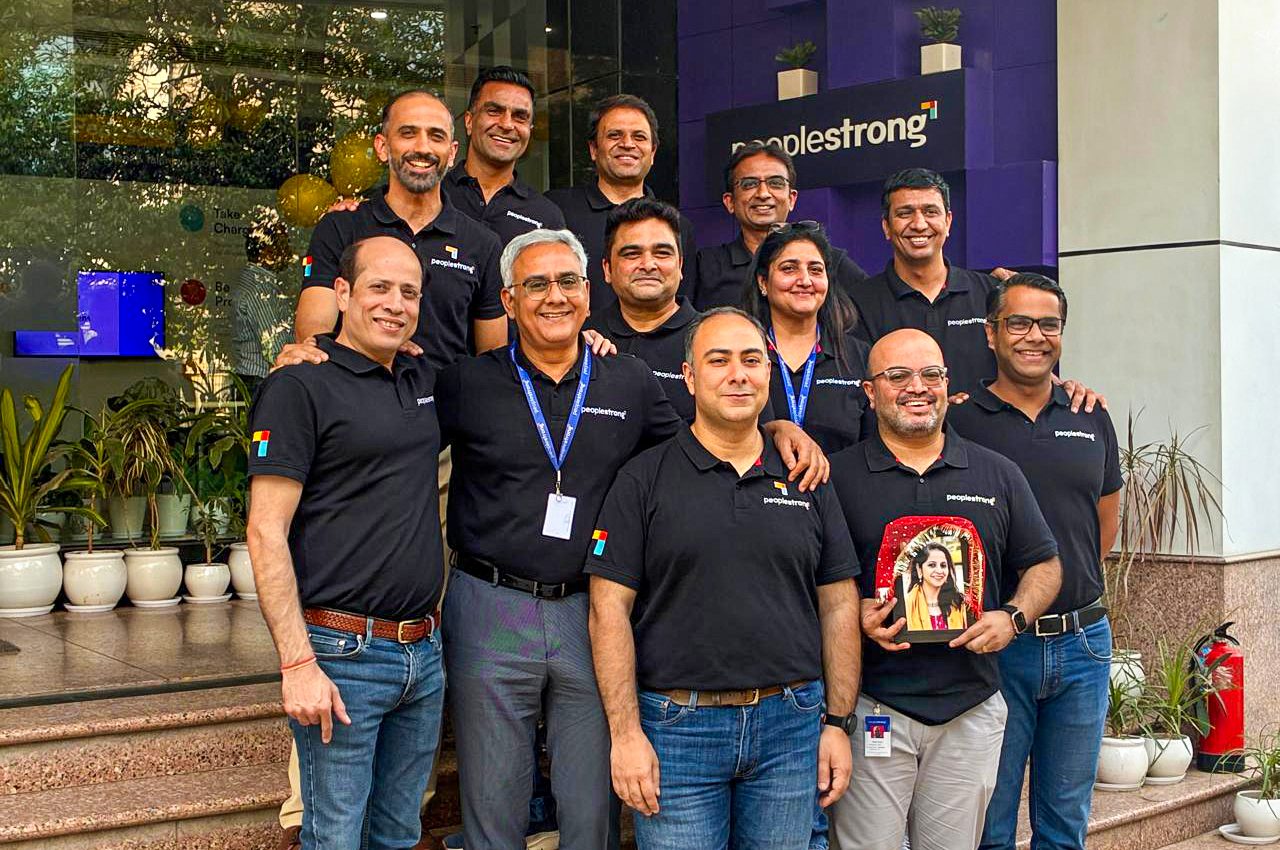According to a HireRight survey, 40% of recruiters said that they faced higher-than-expected employee churn.
A high churn rate is a nightmare for recruiters, as they spend time and money on finding the top talent, only to lose them so soon. The reasons are myriad—the role was not what the employees expected, they didn’t like the company culture or management, or something else.
That’s where the recruitment screening process can help by filtering out candidates who are not a good fit.
Screening is done before a candidate is forwarded to the selection process.

In this article, we’ll discuss what the recruitment screening process is, why it’s important, and how to do it right.
Let’s get started.
What is the Recruitment Screening Process, and Why is it Important?
The recruitment screening process is used to weed out candidates who are not a good fit for the role. It’s typically done by the HR department before getting the other department heads involved in the selection process.
It’s one of the recruitment process essentials and can’t be skipped.
Here are some benefits of screening:
- Saves Time: By filtering out unwanted or unsuitable candidates, you save time you’d have spent interviewing them and going through various rounds in the selection process.
- Reduces Employee Turnover: Screening is a good way to ensure that only the candidates who have the right skills and attitude move to the selection process. By choosing the right-fit candidates, you can reduce employee turnover because such candidates are less likely to leave.
- Helps Find the Right Candidates: The recruitment screening process considers myriad factors to assess and sort candidates. This helps you find the candidates who are the best fit for a specific role.
Challenges in the Recruitment Screening Process and Tips to Avoid Them
Here are some of the key challenges recruiters face during the screening process and tips to overcome them.
1. High Volume of Applications
Sometimes, recruiters get hundreds of applications, and sorting through them is a nightmare.
Recruiters overwhelmed with resumes
On average, a recruiter receives more than 250 resumes for an open position – only 12% meet requirements of the role. Source
Ensuring they do not reject a worthy candidate is another challenge when screening so many applications.
A simple way to overcome this challenge is to use recruitment automation software. Features like automated resume parsing and candidate-role matching can help save time and find best-fit candidates. These tools use specific keywords to parse through hundreds of resumes and find the ones that best fit a role.
Moreover, AI-powered resume screening tools can save as much as 30% of screening time.
Another thing you can do is keep a ready list of skills and experience to look for when screening applications.
2. Subjectivity and Bias
As much as you try, you may have some biases that creep in, making you prefer certain candidates over others.
Avoid this by standardizing your screening process and keeping the questions and tests consistent for each department. Use these hiring process templates by PeopleStrong to ensure consistency in your recruitment process.
You can also use Applicant Tracking Systems with resume screening and candidate matching capabilities. Such tools use keywords and algorithms to find the right candidates, removing the scope for human bias.
3. Poor Candidate Experience
Candidates who are rejected without a reason or explanation can get frustrated and post about their negative experiences online. Websites like Glassdoor are filled with negative reviews by disgruntled candidates who got rejected.
According to Statista, 24.65% of recruiters find delivering a positive candidate experience a key challenge. Another study found that 58% of candidates declined an offer because they had poor experience during the recruitment process.
Here are some tips to avoid this:
- Be courteous and transparent with all candidates, especially regarding the compensation and roles and responsibilities
- Give candidates clear reasons why they were rejected, and be as kind and polite as you can
- Always ask for feedback from both accepted and rejected candidates
- Be upfront in communicating the steps and timelines involved in the recruitment process
Ensure that even rejected candidates have good experiences and would be happy to apply again for some other role.
4. Slow Hiring Process
One of the key challenges recruiters face is reducing time-to-hire. Given the various steps involved in screening and selection, the hiring process can get very long and cumbersome.
This does not just affect the HR team’s productivity but provides a bad candidate experience. A long hiring process is among the main reasons why candidates decline a job offer.
How can you streamline and shorten your screening process?
Use applicant tracking systems (ATS) to make screening processes more efficient. A good ATS system can help you:
- Quickly source the best candidates from multiple platforms
- Go through job applications in minutes instead of hours and filter out the unsuitable ones
- Cross-check facts and references
- Create and assign online tests and interviews with predesigned templates and AI-generated questionnaires
All this results in significant time savings. According to a report, you can get a 20% reduction in sourcing time and a 30% reduction in screening time.
PeopleStrong Recruit also delivered a 45.5% candidate conversion rate, which is better than the industry standard.
5. Incorrect Information on Resumes
According to a 2022 survey, 66% of employers in the APAC region find discrepancies in candidates’ past employment details. 47% saw discrepancies in candidates’ education details.
It’s a well-known fact that most people stretch the truth a bit, even if they don’t outright lie on their resumes.
This is a major problem for recruiters as they use resumes to assess whether a candidate is the right fit.
Using AI-powered recruitment tools or dedicated background verification software, you can accurately verify the information a candidate has added to their resume from various online sources.
AI tools can scour the internet to find all the information about a candidate that is available online. The best part is that it won’t take hours of manual effort but a few seconds.
7 Steps of the Recruitment Screening Process
Here are the seven key steps involved in the recruitment screening process. Depending on your in-house requirements, you can include some or all of these in your screening process.
1. Skills Assessment
This is the initial screening stage, where recruiters go through the various applications to filter out candidates who don’t have the required skills or experience.
This is a time-intensive task that requires going through hundreds of applications. Many recruiters use AI-powered ATS to automate this process.
2. Resume Review
Once you’ve done initial filtering, you then need to go through the resumes of shortlisted candidates in detail. This will help you get more detailed insights into the candidates’ past experience and skills.
Application Tracking Systems like PeopleStrong offer resume-parsing and AI-powered candidate-matching features to save time and effort. Not to mention, it helps you find the most suitable candidates quickly.

At this stage, you can again remove unsuitable candidates who passed through the previous stage.
3. Phone Screening
By this stage, you will have a shorter list of candidates who are suitable for the job. But you can’t forward them to the selection phase without talking to them first and understanding a few basics.
At this stage, recruiters call the candidates and ask some basic questions, such as:
- Why do you want this job?
- What are your salary expectations?
- What is your notice period?
Even candidates who are a good fit may get rejected at this stage based on other criteria. For example, if you want someone to fill a position instantly, then interviewing someone with a 3 month notice period is a waste of time.
4. Online Candidate Profile Research
Now, you’ll have an even shorter list of candidates to choose from. At this stage, recruiters conduct an online profile check of each candidate, and you should do the same.
Check their LinkedIn and social media profiles to get a general sense of each candidate. This will help you assess whether a candidate’s personal values align with your company’s culture and values.
For example, you may want to avoid radical candidates who engage in leaving racist or hateful comments on social media. These days, social media has become a way for people to showcase their personality, so you can use that to filter out bad-fit candidates.
Here are some other red flags to look for:
- Long, unexplained career gaps
- Incomplete or weak LinkedIn profile
- Frequent job changes
- Inconsistent information across platforms
- Typos and mistakes in social media profiles
All these point to unprofessional and unreliable behavior, which you want to avoid when hiring talent.
5. Recorded One-Way Video Interview
While detailed interviews are a part of the actual selection process, some recruiters conduct a brief one-way recorded interview to get more information on candidates.
You can use it to ask basic filter questions, such as:
- How does a person handle conflict in the workplace
- What do they consider a good work culture
- How good they are at verbal communication and public speaking
Use questions that help you assess the soft skills of a candidate, especially those required for a specific role.
Need help finding the right questions to ask?
Use PeopleStrong’s “Criteria-To-Qualify” feature to generate pre-screening questions for this stage. Here’s an example.

For example, if you’re hiring for a managerial position, ask questions that help you understand a candidate’s managerial style.
Using PeopleStrong Recruit for interview scheduling, you can make the process 8X faster as well.
6. Real-Time Online Test
This is typically a brief skill test to ensure that only technically strong candidates pass through to the selection process. This is not conducted by every recruiter but is optional.
Depending on how crucial the role is and how much technical competency is required for the role, you can use it or skip it.
For example, if you’re hiring for a senior content editor position, you need to ensure that the candidates have essential editing skills before you recommend them to the head of your content team.
A small online test can help you filter out unskilled candidates.
PeopleStrong’s plug-in assessments feature can help you quickly create short tests to evaluate essential skills required for the job.
It integrates with 20+ tools to streamline the assessment process. It helps save over 70% of time spent on assessment for both candidates and recruiters.
7. References and Background Check
Lastly, conduct a background check for all the candidates you want to move to the selection phase. You can do this manually or use a background verification software solution.
According to a research study, here are some types of background checks that recruiters perform.
Also, if a candidate has provided references in their resume, make sure you contact them and get feedback for each candidate.
Final Thoughts
A screening process is an essential part of any company’s recruitment process.
It helps you weed out unfit or unskilled candidates and saves time and effort in the selection process. Not to mention, it helps you find the top talent for your company.
Use this post as your guide to conduct a thorough recruitment screening process using some or all of the steps listed above. Use PeopleStrong’s talent acquisition suite to streamline your entire recruitment process. Good luck hiring!














